In this guide, we will look at dust collection as a system. We’ll then discuss each individual component of the system and how it can help or hurt overall performance. Then, we’ll talk about what to consider as you work to achieve the best design for your specific individual needs. I will also show you two videos of two different systems I set up and used here in my workshop. Video 1 shows a low cost dust collector system with great performance that I used for over a year. Video 2 shows the ultimate small dust collector system which is what I am currently using.
Dust Collection & Your Health
It’s funny how, after many years of experience, the things I came to regard as important are things I didn’t even give a second thought to as a beginner. Dust collection is one of those things.
Before I get into the specifics of what I have learned about setting up a dust collector system and choosing the best dust collectors, tubing, gates, fittings, etc., I think it is vitally important to take a moment to look deeper at why this is such a big deal.
The choices we make in this area can literally be life or death, not only for us but for the people around us, including the other members of our family if we have a home workshop.
The Dangers of Wood Dust
When we do woodworking, we produce different sizes of wood chips and dust particles, both of which we can collect with our dust collectors. However, studies have shown that the fine dust, which in many cases we can’t even see, is the most damaging to our bodies. Known as “inhalable dust,” it’s made up of microscopic particles that contain a very high percentage of silica, the main component of wood fibers. Silica is basically glass. You don’t want it to embed itself deep in your respiratory system.
According to Bill Pentz of Cyclone and Dust Collection Research, “Most small shop workers get more fine dust exposure in a few hours woodworking than large facility workers get in months of full-time work and we frequently work more toxic woods, so have higher more dangerous toxic chemical exposures.” That is undoubtedly true for luthiers and the woods we work with.
When I first read that Bill Pentz quote, I was shocked. I always told myself that I really don’t make that many guitars and I don’t use that much wood so I’m not at risk, but it looks like I was very wrong.
This quote from a study on Cyclone and Dust Collection Research’s website really drives the point home: The “insurance data on large facility woodworkers showed … almost all lose about 1% of their respiratory capacity per year of work, and woodworkers have shorter life spans.”
If that’s not a wakeup call, I don’t know what is!
But you’re in the right place, lets get our dust collection systems right. Make it our first priority to ensure our health and the health of those nearest and dearest to us.
Dust Collection Fundamentals
In other words, I advocate for a holistic approach to guitar design.
We’ll be more effective if we apply the same approach to dust collection. Think of it as a “dust collection system,” not just a dust collector.
First, let’s look at the system requirements and why each component is essential.
Main dust collection system requirements:
It Must Capture All Types of Dust
It must be easy to clean
How many tools will need to run at once?
Consider the size of your workshop
Electrical Requirements
Your Other Unique Needs
Types Of Dust Collectors
1 – The Single-Stage Dust Collector
However, single stage dust collectors that use pleated filters tend to perform better. Pleated filters are much more efficient in removing the more dangerous fine dust. They’re easier to keep clean and tend to operate more efficiently.
Another shortfall of many single-stage dust collectors (I learned this the hard way): it draws woodchips and anything else directly into the spinning metal impeller before it goes into the dust bag. This can damage the impeller if you accidentally suck up something large and hard, like a screw or drill bit.
Secondly, if the impeller is steel, it could create a spark if it gets hit with another metal object, potentially starting a fire inside the collector.
Because the two-stage dust collector is designed to minimize many of the problems associated with the single-stage, it’s worth consideration.
2 – The Two-Stage Dust collector
This first stage also keeps wood chips (and of course anything else that accidentally gets sucked up) from hitting the spinning impeller, thus reducing the chance of damaging it or causing potential sparks.
The second stage can be a bag filter as mentioned above, but most two-stage systems use a pleated filter design. Far less dust will even reach the second stage of a two-stage dust collector so you can use a finer micro filter since it won’t get clogged as fast as it would in a single-stage system.
Some pleated canister filters will also have a paddle inside of them that will allow you to knock off any dust build-up on the inner surface. Using the paddle regularly will allow you to maintain proper airflow and filtration with the turn of a handle and without the hassle of disassembling it.
Choosing The Best Dust Collector
More Efficiency VS More Horsepower
One way to determine how much power you need is to run specific calculations (i.e., CFM and static pressure loss) for each machine you use. Although there’s an excellent resource you can check out here, it’s not how I recommend approaching this particular problem.
Just like building a handmade guitar, I feel like the best results come when you take a balanced approach of looking at the numbers and weighing them carefully against your own experience and intuition.
When I started looking for a dust collector for my one-man woodworking luthier shop, I started out thinking about it from this perspective: “I’m a pro luthier. I need pro-level stuff—the more power, the better…220v..3Hp…bring it on baby!”
However, after a lot of soul searching, I realized that while more power is a great thing if you can get it, maybe I didn’t need as much suction power from my dust collector as I thought.
In the next section I’ll explain why…
Dust Collection System Design
Up to that point, I had used a single-stage Grizzly dust collector for over 15 years. It was hooked up to 5 different machines. I had 3-micron bags on it—and although I don’t have any hard data to support this—I can confidently tell you that they did not filter that fine. They were always a clogged-up mess and would spread very fine dust every ware. I dreaded the nightmare of changing out the bigger lower bag. It was always a mess.
My old system had very long hose runs made of flexible ribbed plastic and quite a few elbows and other fittings (more on those soon). It had ineffective connections to low-quality plastic blast gates which clogged over time, and stopped sealing correctly.
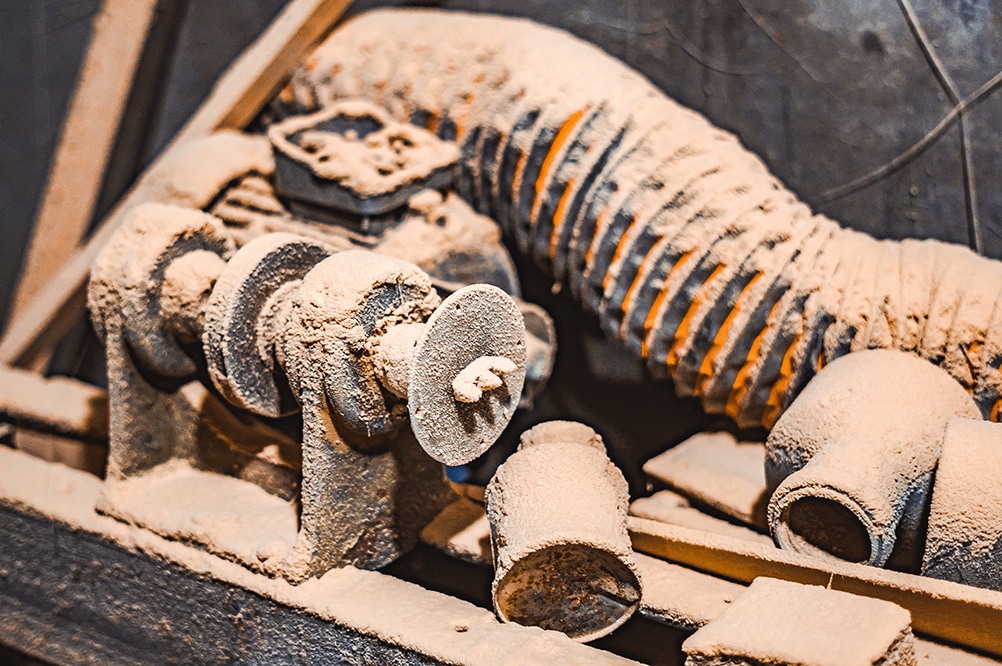
I estimated that because of all the system flaws and issues at each machine, I was probably working with less than half the CFM (cubic feet per meter, or airflow) my dust collector itself was rated.
That’s a great illustration of how the system all works together to produce the end result. In this case, the system worked as a whole to negatively impact the outcome and limited what the more powerful dust collector could do for me.
Additionally, I’m just a one-man shop and never run more than one machine at a time. Even with less than half the suction, my tools were just fine. Even my drum sander stayed mostly clean (aside from some dust left on top of the wood as it came out the other side)!
I realize now that I if I had understood this better and used the systematic approach I am showing you, I could have used a dust collector half the size with some improvements to the duct materials and blast gates and got the same level performance. AND probably been a lot healthier, too.
To boil it all down:
Your dust collection performance is not just the amount of CFM or power it has, it’s a net result of the whole system.
I had this epiphany right after I finished talking to the guys over at one of my favorite dust collector companies and was doing my best to figure out how to cram a giant machine that was several thousand dollars into my tiny power-tool room. Thankfully, I hadn’t bought it yet because once I came to my senses, I realized that even my tiny machine room would have been way overcrowded with that machine.
Using this new systematic way of approaching the “dust collection system” I started thinking through different ways to design and set up the perfect dust collection system for my needs.
After a lot of research and brainstorming I came to the conclusion that I had two main directions I could take:
- Low cost/very good performance dust collector system
- Higher cost/ultimate performance (and features) dust collector system
*What ended up happening is that I tried both the lower and higher cost dust collection systems and here is what I found out…
Dust Collection System 1 – Rockler Dust Right
That’s pretty cheap for a two stage system with cyclone separator!
- Dust Collector: Dust Right Wall Mount 3/4 hp 650 CFM
- 1 Micron Filter: Dust Right Canister Filter
- Cyclone Seperator: Oneida Super Dust Deputy 4″
- Fittings: Dust Right Quick Connect System 4″
- Hose & Handle: Dust Right Quick Change Handle and Hose 4″
Below you can see it all set up in the machine room of my workshop. To connect to each machine, I simply plug the hose in using the quick connect fittings and hose handle. Because of the cyclone separator, almost all of the wood dust and chips get taken out before they reach the dust collector filter and bag, keeping things running efficiently and clean, pretty cool!
Dust Collection System 2 – Oneida Supercell
After using system 1 for about a year it was time to start over and design system 2 which was to be the ultimate in performance and features and if possible, still be as at least as small in size due to my limited space.
A year or so prior to this there really was no compact yet super powerful system for me to choose from, so I really wasn’t sure what I was going to do for the second part of this journey. Amazingly, right at that time I received an email from Oneida Air systems letting me know they had a completely new type of dust collector system in development and wondered if I might be interested in testing it in exchange for my honest opinion.
I took a look at the system and I was blown away. It was smaller than my current system, and at the same time 10x more powerful! Plus it had tons of other great features you can see in the video below that took it over the top and definitely checked off my requirements for system #2 to have “Ultimate Performance and Features”.
The system is called the “Supercell High-Pressure Dust Collector” check out this video for all the information, installation, and some testing.
Here’s the full list of components for this dust collection system which I currently use in my small machine room:
- Dust Collector: Oneida Supercell Dust Collector
- Fittings: Dust Right Quick Connect System 4″
- Hose & Handle: Dust Right Quick Change Handle and Hose 4″
The Supercell is my current dust collector and I feel it is by far the best option for my guitar shop. It is a little expensive and it’s also 230v, but if you have the budget (and the 230v power) it’s really an amazing machine that I see myself using for a long long time.
Optomizing Your Dust Collection System
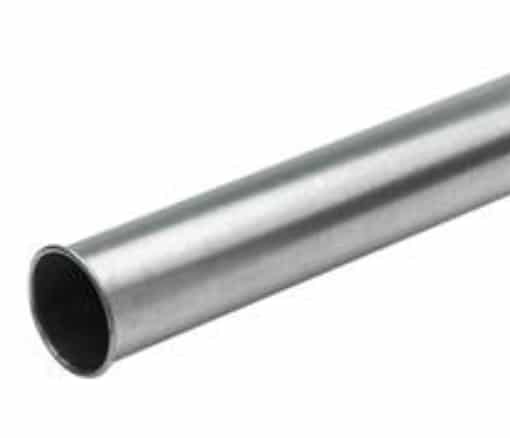
Metal Ducts
If you’re running your ducts long distances, you’ll need to invest in metal (or at least PVC) to make sure you retain as much suction as possible at the machine.
Metal ducts are also much easier to ground electrically, reducing the risk of static charge build-up, which can be a fire hazard.
That said, they are more expensive and much harder to install than some of the other types.

Flexible Hose
The good thing about the plastic flexible dust collection hoses is that they are cheaper and easier to install than the other types.
Regardless of what material or duct style you use, it is best to design your system and the placement of your tools to make your runs as short as possible to minimize suction loss and costs.
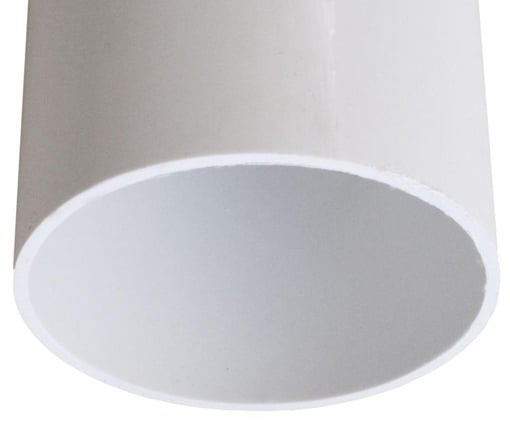
PVC Sewer Pipe
1 – Even though they have a 4” diameter, they can sometimes be challenging to connect properly to the 4” dust collection fittings. If this is the case, you may need a special fitting like this one here.
2 – The second drawback is static electricity, which can build up in the PVC pipes. There are solutions to grounding it (like this here), but it does take some extra work.
For my new workshop it made the most sense to just use one piece of flexible hose to attach directly to each machine as I use them.
Dust Collection Fittings and Gates
If you can, I recommend going for a higher quality metal blast gates if possible. I did get quite a few years out of the plastic ones, so if they are all you can afford right now, then go for it! Don’t let that stop you. Just remember we are trying to protect your health, so use what you can and upgrade later.

Final thoughts & Recommendations
In the end I decided to keep the Supercell and after using it for a while now in my day to day guitar making work, I simply can’t say enough good things about it. System 1 – The Rockler/Dust Deputy is great too and like I mentioned earlier it’s way better than the system I had in my old workshop, but the Supercell System literally has 10x the suction in a smaller footprint with so many great features. So, if you are working with a smaller budget then start with the Rockler, it will serve you well for many years, but if you can swing it, the Supercell truly is the ultimate compact two stage dust collector.
Below are a few more very important thoughts that I hope you’ll consider as you move toward designing and setting up your new dust collection system.
When I was starting out, I was barely surviving as a luthier. Being able to design and build the ultimate two-stage dust collection system was impossible at first. What I am hoping you can take from this guide is how to create your best system using all that we covered above.
But I know that we live in the real world with limitations and obstacles. I totally get it! I’ve been there. That doesn’t mean that you can’t get that perfect system one day, it just means you might have to find creative ways to build what you can now and improve on it as you have opportunity and resources to do so.
Rather than saying “I can’t get something like that, I don’t have the money,” I encourage you to let yourself dream big, make a master plan, and visualize it there in your workshop. Then step back and look for the first baby step you can take right now to move in that direction.
I have found working in stages gives you time to grow and get real experience. You’ll learn what you personally like, what works, and what doesn’t.
When you start with that big dream in mind, you have something to work toward. Who knows? Over time you might discover that, like me, you didn’t need everything you thought you did. You might find a better way.
So, start where you are. Keep the safety and health of you and your loved ones your first priority. Protect yourself the best way you can. And always keep inching closer to the big goal one day at a time. You’ll be amazed at how fast you get there and what you learn along the way.

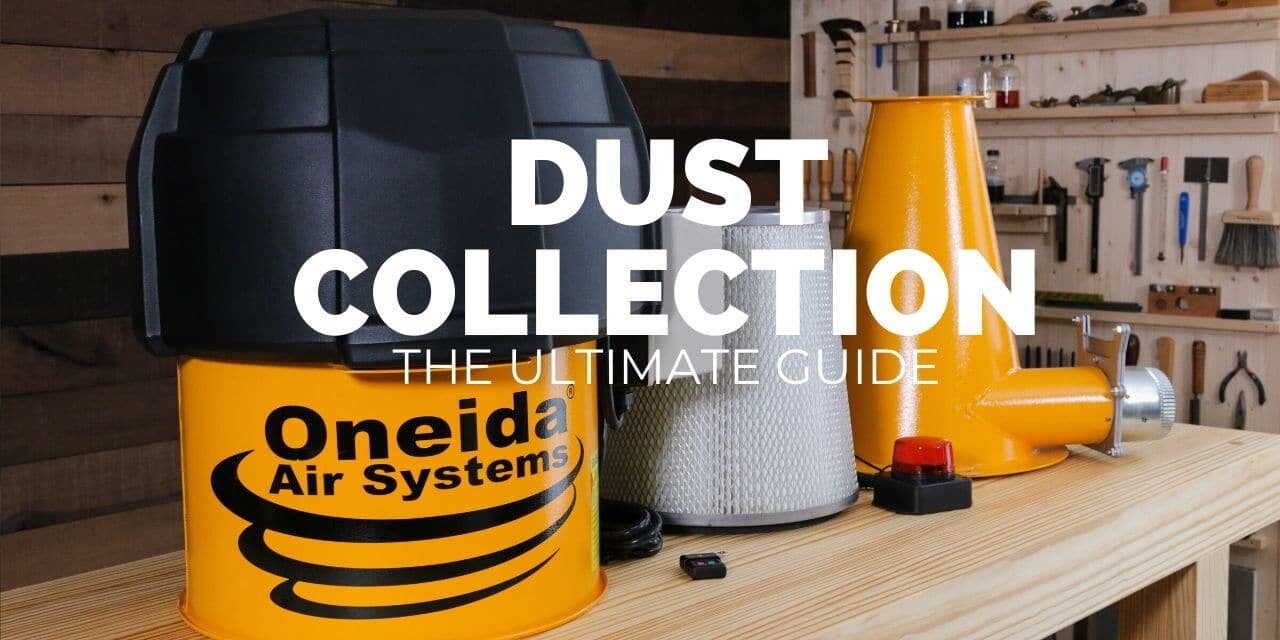


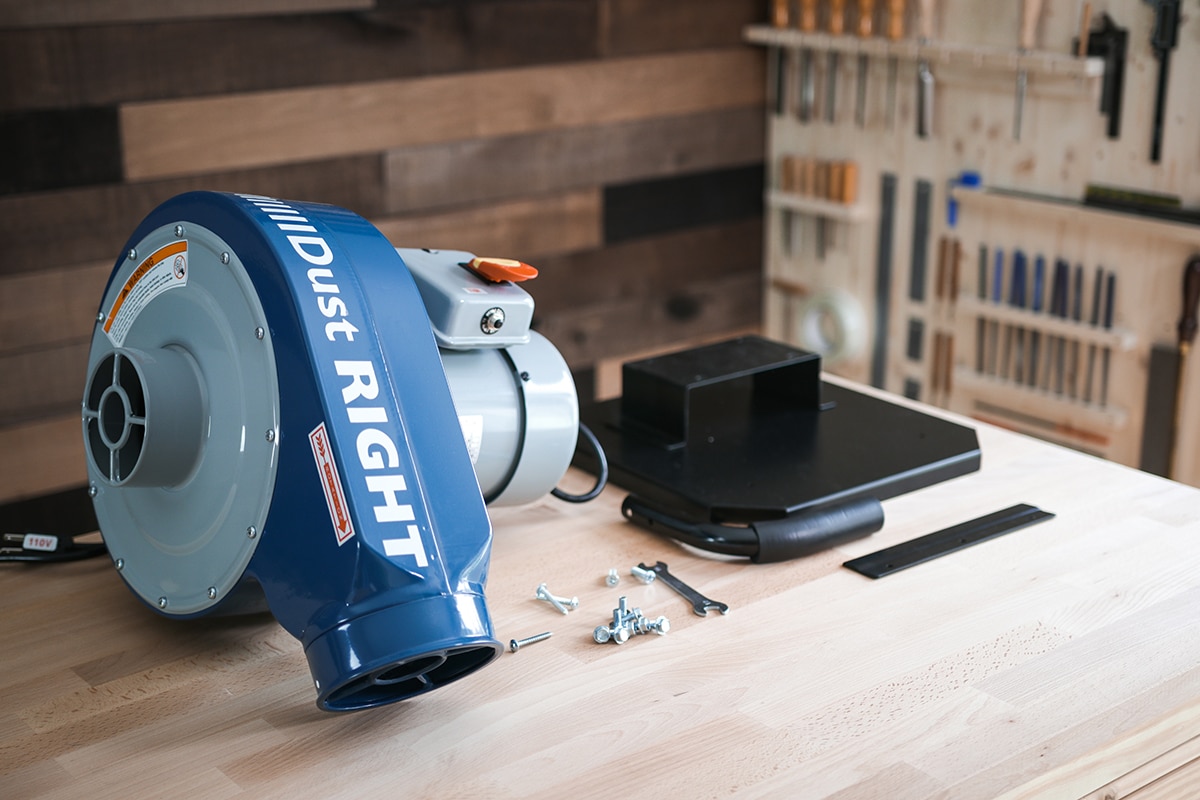
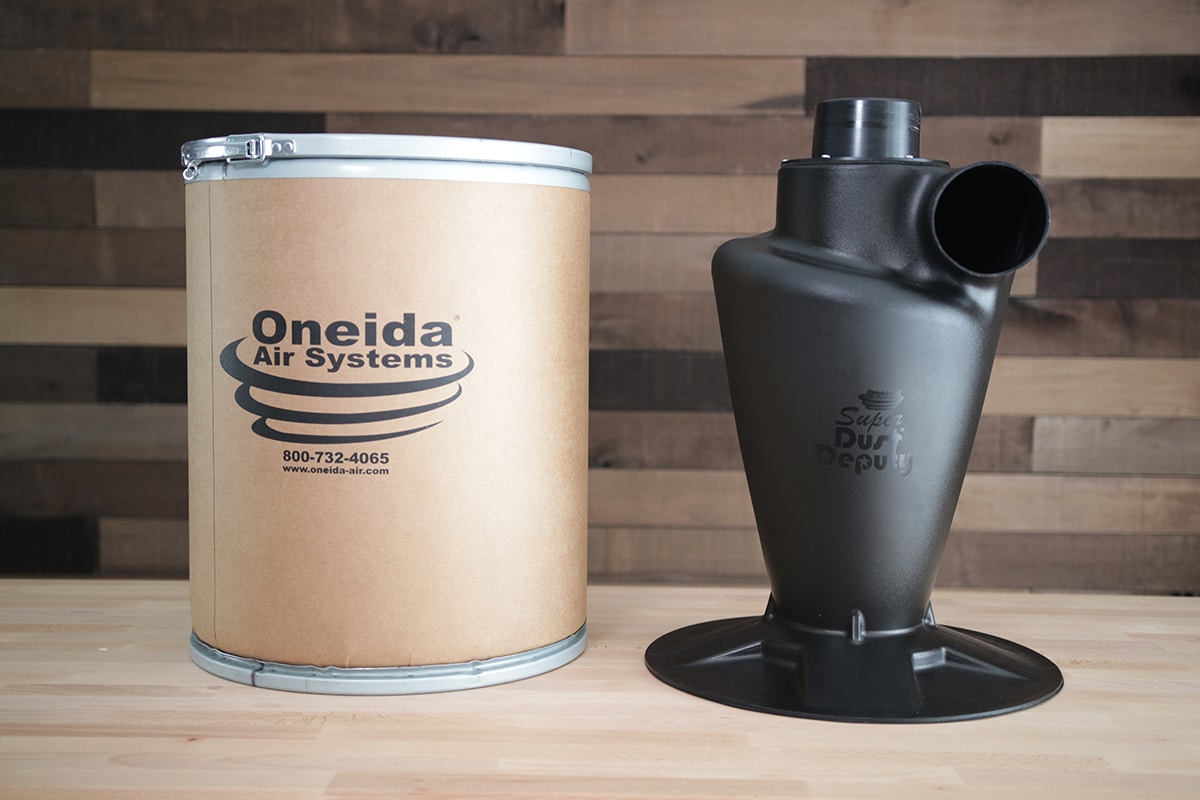

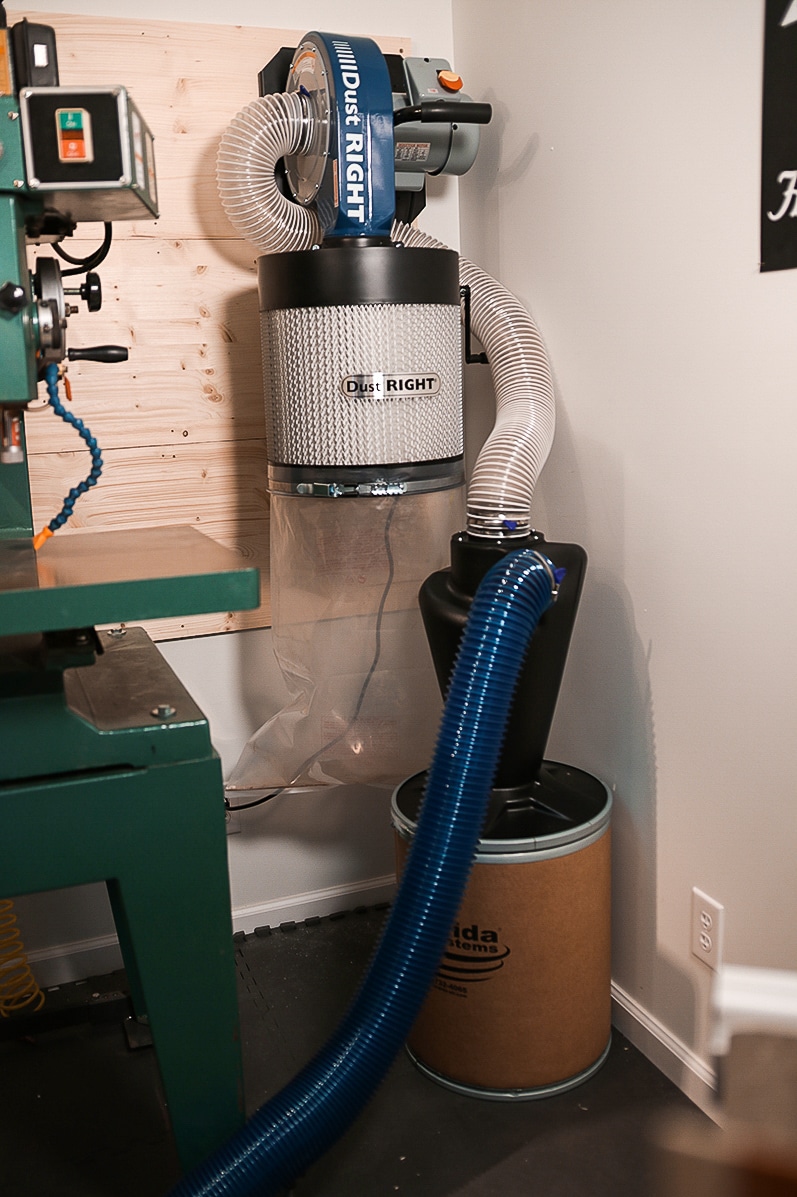




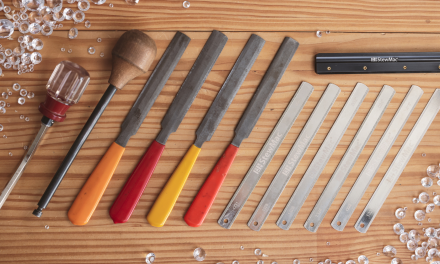
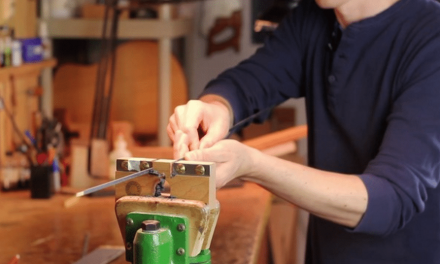

This is a great article! I always seem to come back to it while researching. I especially love the graphics!
Since starting my journey in the dust collection, I’m always amazed how much it matters to so many different industries.
-Kaitlyn
I’ve read many articles on dust collection but didn’t find informative like this. It is exactly what I was looking for. Your article’s best part is ‘My New Dust Collection System’ Good attempt to inform something innovative. Thank you.
What a great resource – thanks for taking the time to share your knowledge and experience – it’s made me more focused on updating my system for long term health!